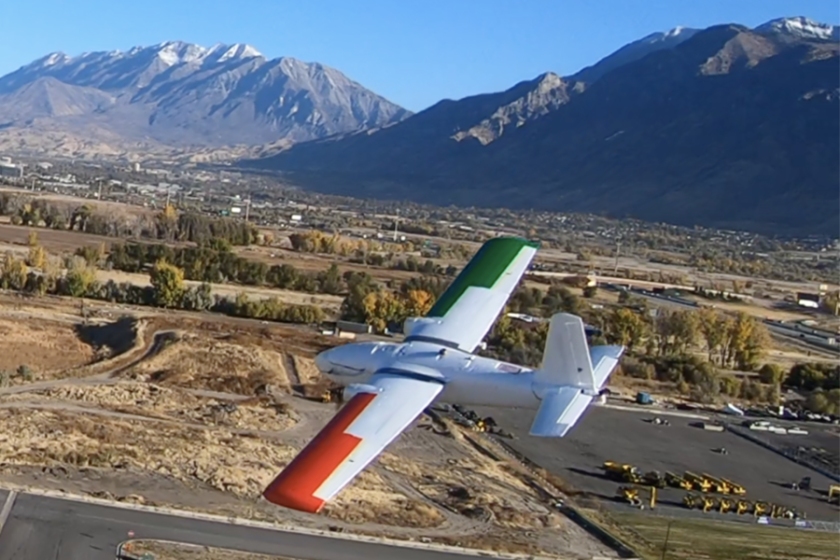
Electrical Engineering student, Sequoia Ploeg, has loved “flying machines” since he was a little boy, so when he was told he would be working on an airplane-themed project for his senior Capstone, he knew it would be a perfect fit.
Ploeg was excited because the project doubles not only as a chance to work on a Capstone team, but on a competition team as well. The project allows students to participate in an event hosted each year by the Association for Unmanned Vehicle Systems International (AUVSI) and is called the Student Unmanned Aerial Systems Competition (SUAS).
The AUVSI SUAS annual competition has been held in Maryland each June since 2002. According to their website, their mission is to require “students to design, integrate, report on, and demonstrate a UAS capable of autonomous flight and navigation, remote sensing via onboard payload sensors, and execution of a specific set of tasks.”
Teams come from all over the world to enter their UAS into the competition. The plane is required to fly itself through a series of way points and obstacles before it drops an autonomous car that will parachute from the sky. While the car drives to a final GPS location, the airplane will take pictures to identify the targets on the ground before landing.
This year, the team consisted of a group of 12 students who voted on Mechanical Engineering student Nathan Toombs, as their team lead. Toombs took it upon himself to create a framework that would help them accomplish each phase of the project on time.
To him, organization is key in helping the team succeed from year to year. “A goal that we have is to be able to document what we are doing really well so next year’s team will be able to pick it up from there and run with it,” Toombs said.
Toombs likes how the competition is centered around a Capstone project because it allows them to give the project the time it needs to be done well. “It is a really big project even with 12 people so because it’s a 3-credit hour class, we can justify spending 10+ hours on it a week. If it weren't a class, it would take a lot more people to get the project working," he said.
Ploeg added that he likes the project being both a Capstone and competition team because of the extra drive it gives him to complete the tasks. He would have wanted to be part of the UAS team either way but might not have had the time had it not been part of school.
“I like having the competition teams in Capstone because it means I can do something I actually enjoy,” Ploeg said. “Even though it takes more time than the regular Capstone project, it's been a lot better because I actually want to make it work. I signed up for this.”
Toombs said having a diverse set of majors on their Capstone team has been really helpful in completing the project. Having different backgrounds and realms of knowledge allows them to share ideas.
“We have one Computer Engineering student who knows machine learning, neural networks and other things that I don’t know how to do,” Toombs said. “His knowledge and experience is crucial for our team because he gets the servers working to be able to take pictures of targets and then recognize them.”
Ploeg said working on this project with a mix of different majors has helped them figure out the right design for the project. It has also opened his eyes to the real world of engineering and has helped him to target a field he wants to pursue.
“As a little kid, I was interested in airplanes, but didn’t know what was involved. It’s been very good practical experience to help me know whether I actually want to do airplanes,” he said.
The 2020 AUVSI SUAS competition has been cancelled due to the rising concerns of the COVID-19 virus. However, despite the cancellation, the team still plans on finishing the project and holding a mock competition.
"We're working around the coronavirus but are still determined to leave the project in a state that the next team could come in and pick it up where we leave off and have a fully functioning system," Ploeg said.